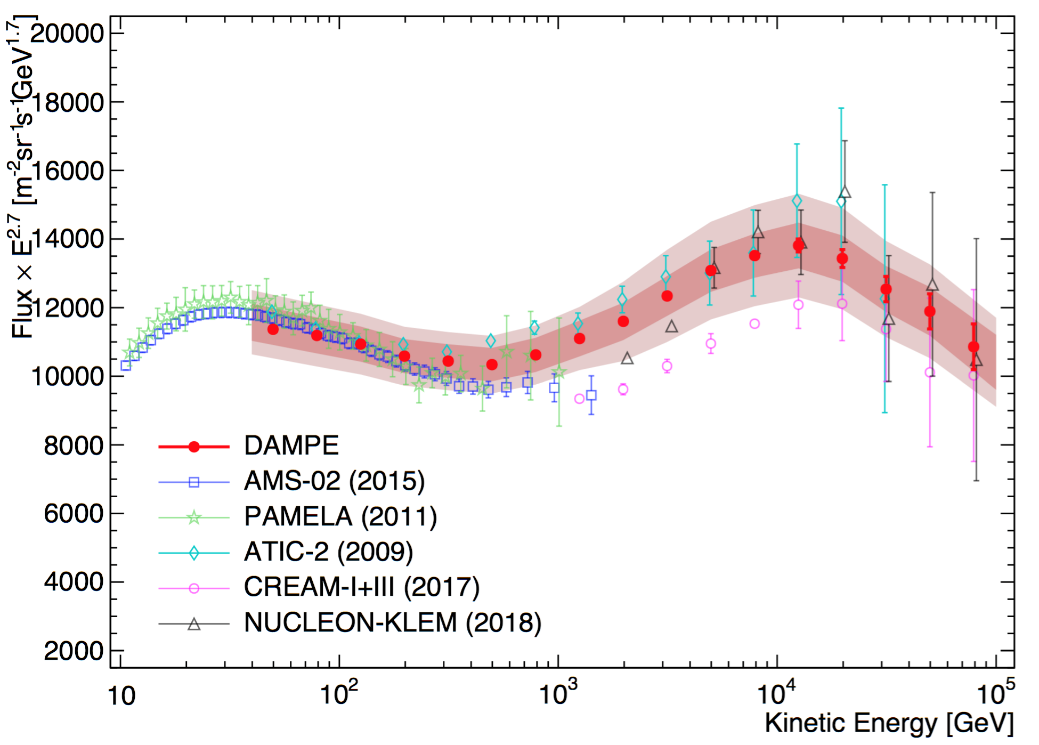Cosmic rays are energetic particles coming from outer space. They are mostly made up of nuclei of various elements, together with small amounts of electrons, gamma-ray photons, and anti-matter particles. At the early stages, many particles were discovered in cosmic rays, such as positrons, muons, pions, which became the basis of the building of particle physics. The interaction between cosmic rays and matter is just similar with particle colliders, but it can reach much higher energies than even our largest colliders on the Earth, and can thus offer us a unique opportunity to probe physics at extreme energies. The origin, acceleration, and propagation of cosmic rays are also very interesting and fundamental questions in modern physics and astrophysics. Protons, the nuclei of hydrogen atoms, are the most abundant component of cosmic rays. Precise measurements of the proton energy spectrum are the key to understanding those fundamental questions of cosmic ray physics. Due to the block of the atmosphere, the direct measurement of cosmic rays needs to be done in space, via high-altitude balloon-borne experiments or space-borne satellites. For a long time the data quality of such measurements is limited by either low statistics or narrow energy-band coverage. The Dark Matter Particle Explorer (DAMPE), also known as Wukong, is a space satellite dedicated to high-energy cosmic ray and gamma-ray observations. Besides probing the nature of dark matter particles, one of the main scientific goals of DAMPE is to precisely measure the energy spectra of cosmic ray particles. DAMPE has an excellent energy resolution (for electrons and gamma-rays), a very good particle identification capability, and a reasonably large acceptance, making it well suitable for the studies of precise spectral structures of cosmic rays.
On September 28, 2019, the DAMPE collaboration reported the precise measurement of the energy spectrum of cosmic ray protons from 40 GeV to 100 TeV energies in the magazine Science Advances. This is the first time to measure the spectrum up to 100 TeV energies in space with a very large statistics. The maximum energy is nearly 50 times higher than that achieved by the Alpha Magnetic Spectrometer (AMS), and 10 times higher than the Calorimetric Electron Telescope (CALET). 
By with YUAN Qiang Fig. 1. The 40 GeV-100 TeV energy spectrum of cosmic ray protons measured by DAMPE (red dots),
The DAMPE result confirms the “hardening” (upturn feature in Fig. 1) feature around hundreds of GeV energies revealed previously. Most importantly, DAMPE newly discovered a spectral “softening” (drop behavior) at about 14 TeV energies. This spectral softening is likely an imprint of a nearby cosmic ray source, e.g., a supernova remnant (see Fig. 2 for a model fitting). The break energy is expected to be the acceleration limit of such a source. The DAMPE result thus provides important data to understand the origin and acceleration of cosmic rays. 
By with YUAN Qiang Fig. 2. A model to fit the DAMPE proton spectrum. Since the launch in the end of 2015, the DAMPE detector works very stably in-orbit for nearly four years. Significant progresses in the observations of cosmic ray electrons and protons have been achieved. With the continuous operation and data collection of DAMPE, it is expected that more and more high-quality data will shed new light on the fundamental questions about cosmic ray physics. The DAMPE mission was funded by the strategic priority science and technology projects in space science of the Chinese Academy of Sciences. In China, the data analysis is supported in part by the National Key Research and Development Program of China, the National Natural Science Foundation of China, the Chinese Academy of Sciences, and the Young Elite Scientists Sponsorship Program. In Europe, the activities and the data analysis are supported by the Swiss National Science Foundation (SNSF), Switzerland, and the National Institute for Nuclear Physics (INFN), Italy. Compared with previous results. From https://advances.sciencemag.org/content/5/9/eaax3793 |
